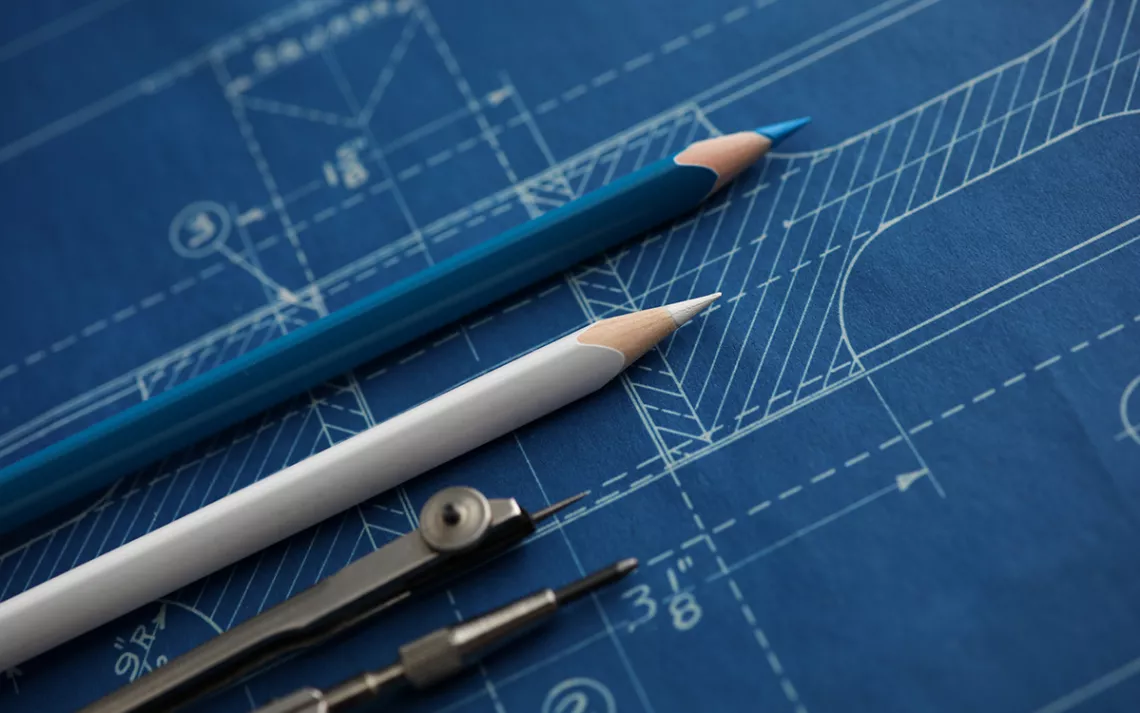Architect Insights on Balancing Form and Function
Architect Insights on Balancing Form and Function
Blog Article
Comprehending the Diverse Career Paths Available for Aspiring Architect
As an ambitious Architect, you have a globe of career paths waiting on you. Each course uses distinct challenges and chances to apply your creativity and technical knowledge. Whether you're attracted to conventional design or the nuances of lasting design, there's a niche that aligns with your rate of interests. Comprehending these diverse options can form your expert trip, yet which direction will you select to explore initially?
Typical Architecture: Creating Frameworks and buildings
Traditional style concentrates on designing buildings and frameworks that blend functionality with visual appeal. As you explore this field, you'll value the elaborate balance between form and purpose. You'll learn to attract ideas from historic designs, integrating aspects like proportion, products, and workmanship. Your layouts can reflect social heritage, showcasing local practices while satisfying contemporary demands.
You'll develop skills in composing, model-making, and site evaluation, permitting you to imagine and communicate your ideas successfully. Involving with clients, you'll need to recognize their vision and equate it right into practical layouts.
Moreover, building codes and sustainability methods are crucial in your job, ensuring your structures are eco pleasant and secure. As you expand in your profession, you'll locate opportunities in domestic, business, or perhaps repair tasks, each offering special difficulties. Accepting typical style leads the way for a fulfilling profession that admires the past while shaping the future.
Urban Preparation: Shaping Communities and Public Spaces
As a hopeful Architect, you can play an essential role as a metropolitan organizer, transforming exactly how neighborhoods function and communicate. By employing neighborhood engagement approaches, you'll assure that citizens have a voice fit their environment. Plus, incorporating sustainable layout principles will aid produce rooms that not just meet today's demands however likewise protect the future.
Function of Urban Planners
While numerous may believe of designers as the single dreamers behind structures, urban planners play an important duty fit the more comprehensive landscape of neighborhoods and public rooms. They examine land use, zoning regulations, and community requires to produce lasting atmospheres that improve lifestyle. By working together with various stakeholders, you'll aid create parks, transportation systems, and property areas that promote social communication and accessibility. Urban coordinators also concentrate on environmental factors to consider, making certain that advancements integrate eco-friendly spaces and support biodiversity. Your competence in spatial design and area characteristics allows you to imagine future development while protecting social heritage. In this vital function, you'll straight affect how individuals experience their environments, making every job a possibility for favorable change.
Neighborhood Involvement Techniques
Effective community involvement methods are vital for urban planners to assure that the voices of locals are listened to and valued in the planning procedure. To promote purposeful discussion, you ought to prioritize open forums and workshops where neighborhood members can express their concepts and issues. Use studies and social networks to reach a wider target market, making sure diverse perspectives are included. Collaborating with local companies can boost trust fund and promote deeper links. It's crucial to give clear info about decision-making processes and proposed jobs, permitting citizens to really feel educated and encouraged. By actively integrating and paying attention responses, you'll develop spaces that show the neighborhood's demands, eventually leading to even more lasting and successful metropolitan environments. Embrace transparency and constant dialogue for long-term effect.
Sustainable Style Concepts
When developing metropolitan areas, incorporating lasting style principles is essential for creating environments that prosper both ecologically and socially. Take into consideration integrating green rooms, like parks and yards, to improve biodiversity and improve air high quality.
Designing with water preservation in mind is likewise essential-- think regarding rainfall gardens and absorptive surfaces to take care of stormwater. Including area participants during the preparation procedure assurances that the rooms you create meet their demands and encourage social communication. By embracing these principles, you'll add to vibrant, lasting city landscapes that profit everyone.

Landscape Design: Developing Lasting Outside Atmospheres
As you discover landscape design, you'll uncover vital design principles that create functional and gorgeous outside areas. Sustainable techniques play an essential function in ensuring these atmospheres thrive while decreasing environmental impact. Plus, you'll locate a selection of profession chances that permit you to make an actual distinction in exactly how people engage with nature.
Style Principles in Landscape
Comprehending layout concepts in landscape style is crucial for developing sustainable outside atmospheres that harmonize with nature. You'll need to contemplate elements like proportion, balance, and scale to ensure your layouts feel cohesive and welcoming. Furthermore, pay attention to seasonal adjustments, making with materials that complement the surroundings year-round.
Lasting Practices Summary
Sustainable methods in landscape design not just concentrate on aesthetic appeals but additionally focus on eco-friendly health and wellness and resource conservation. By incorporating indigenous plants, you enhance biodiversity and lower the demand for chemical plant foods and pesticides. Implementing efficient watering systems assists save water and reduces overflow, safeguarding blog nearby ecological communities. You can make areas that advertise soil health, such as making use of organic materials and exercising permaculture principles. Additionally, integrating environment-friendly infrastructure, like rain gardens and permeable pavements, aids in stormwater monitoring and decreases metropolitan warm. You add to a healthier world and provide areas that foster community link when you develop exterior atmospheres with sustainability in mind. Eventually, these techniques guarantee your designs benefit both people and the setting for years ahead.
Occupation Opportunities Expedition
With a strong foundation in sustainable techniques, landscape design supplies a range of job paths that enable you to make a significant influence on the atmosphere. You could work as a landscape designer, creating visually pleasing and practical outdoor rooms, or focus on ecological remediation, helping to revitalize broken communities. Urban organizers commonly work together with landscape architects to create environment-friendly spaces in metropolitan setups, improving city livability. If you're enthusiastic about education, take into consideration ending up being a landscape style educator, motivating future generations. Furthermore, you could collaborate with nonprofits concentrated on environmental sustainability or involve in study to introduce brand-new methods. Each course not just shapes beautiful settings but likewise cultivates a much healthier earth for future generations.
Lasting Design: Focusing on Eco-Friendly Practices
As you explore your profession in architecture, accepting environmentally friendly techniques can establish you apart in a competitive field. Sustainable style concentrates on creating structures that lessen ecological effect while boosting resident wellness. By integrating eco-friendly products, energy-efficient systems, and sustainable structure strategies, you'll contribute to a greener future.
Begin by obtaining knowledge of green certifications like LEED or BREEAM, which can boost your qualifications. Think about how natural light, air flow, and thermal efficiency can maximize design. Collaborate with designers and ecological professionals to introduce solutions that lower waste and save resources.
Do not fail to remember the relevance of neighborhood involvement-- interesting neighborhood stakeholders can inspire styles that harmonize with the atmosphere. As clients increasingly focus on sustainability, your competence in environmentally friendly techniques will not only draw in jobs try this yet also satisfy your passion for liable design. Embrace this crucial facet of the profession, and see your profession grow.
Historic Conservation: Protecting and Bring Back Cultural Heritage
While you begin on your building trip, consider the important role of historical preservation in keeping our cultural heritage. This field concentrates on the security and restoration of significant structures, websites, and structures that tell the tales of our past. By participating in historical conservation, you'll help secure the building tradition that forms community identity.
As a historical conservation Architect, you'll analyze historical significance and evaluate the condition of structures. You'll function carefully with preservationists and historians to guarantee genuine remediation methods are utilized. This job path allows you to blend imagination with research study, allowing you to make options that appreciate initial products and craftsmanship.
Your job not just contributes to sustainability by reusing existing structures yet additionally cultivates a sense go right here of satisfaction within communities. Welcoming this path will assist you become a guardian of background, maintaining the stories and looks that improve our lives.
Inside Style: Enhancing Indoor Spaces
Historic preservation and indoor design both share a commitment to boosting the developed atmosphere, yet they focus on different facets. While historical conservation highlights keeping a framework's historical and cultural value, indoor style nos in on enhancing interior rooms for functionality and looks.
As an aspiring Architect, you'll locate that indoor design allows you to blend imagination with technical skills. You'll design rooms that not just look good however likewise promote comfort and efficiency. This area entails understanding how light, shade, and materials engage within an area, influencing state of mind and use.
You'll work with different jobs, from residential homes to business offices, ensuring that each environment fulfills the requirements of its residents. By prioritizing individual experience, you can transform interiors into inspiring and functional areas, making a significant influence on how people engage with their environments. Accept the opportunity to enhance indoor environments and shape the way people work and live.
Industrial Layout: Combining Functionality With Looks
Industrial layout plays a necessary duty in developing items that flawlessly blend aesthetic appeals with capability, ensuring that what you use everyday is not just visually attractive however likewise practical. As an ambitious Architect, you can immerse yourself in this field, concentrating on creating every little thing from furniture to customer electronics. Your work entails understanding user demands, products, and manufacturing procedures, enabling you to develop innovative services that enhance daily experiences.
In commercial design, you'll frequently team up with suppliers, marketing professionals, and designers, guaranteeing that your styles are not only attractive yet additionally feasible. This job path offers a vibrant atmosphere where creativity meets practicality, making it a gratifying option for designers interested in shaping the items of tomorrow.
Regularly Asked Questions
What Educational Accreditations Do I Need to End Up Being a Designer?
To become an engineer, you'll require an expert degree in architecture, generally a Bachelor's or Master's. In addition, you'll have to complete a teaching fellowship and pass the Architect Enrollment Exam to practice legitimately.
Are There Certification Demands for Various Architectural Job Paths?
Yes, there're accreditation requirements for various building courses. Architect. You'll require to pass examinations, complete teaching fellowships, and in some cases go after specialized training, depending on your chosen emphasis, like landscape architecture, metropolitan style, or historic preservation
What Software Application Abilities Are Crucial for Engineers Today?

Exactly How Can I Gain Practical Experience While Researching Style?
You can acquire functional experience by interning at building companies, taking part in style competitions, offering for neighborhood projects, or collaborating with classmates on real-world projects. These possibilities enhance your abilities and build useful links in the sector.
What Work Opportunities Exist Outdoors Typical Style Firms?
You can explore various task opportunities outside typical architecture companies, like metropolitan planning, indoor design, landscape design, construction management, property development, or perhaps functions in sustainability consulting. Each deals special difficulties and incentives.
Whether you're drawn to typical style or the subtleties of lasting layout, there's a particular niche that straightens with your interests.When creating urban spaces, including sustainable style principles is vital for creating settings that thrive both environmentally and socially.As you check out landscape architecture, you'll find crucial design concepts that create useful and gorgeous exterior spaces.Comprehending style principles in landscape design is important for creating sustainable exterior settings that harmonize with nature.In industrial style, you'll often team up with engineers, marketing experts, and producers, making certain that your layouts are not only lovely but additionally practical.
Report this page